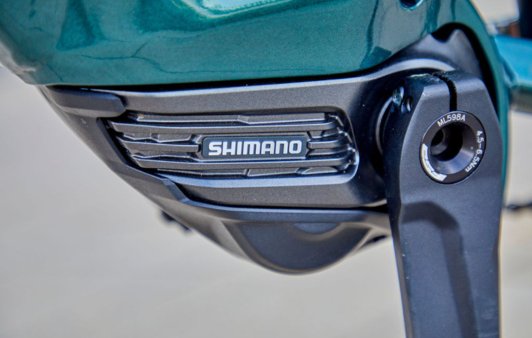In an electric bike (ebike), the motor and drive unit are crucial components responsible for providing the electric assistance that helps the rider pedal more easily or achieve higher speeds. Here's a breakdown of each component:
Motor:
The motor is the core component of an ebike's propulsion system. It generates the power necessary to assist the rider's pedaling effort. Ebike motors are usually integrated into the frame or the wheel hub. There are three primary types of ebike motors:
Mid-Drive Motor: Also known as a central motor, a mid-drive motor is positioned near the bike's bottom bracket, where the pedals and cranks are located. This design provides better weight distribution and a more natural riding feel. Mid-drive motors leverage the bike's gears, allowing the motor to work efficiently across a wide range of speeds and terrains.
At Dutch Cargo all our bikes have mid-drive motors. Bosch and Shimano being the main options to choose from.
Other optios available on the market are:
Hub Motor: Hub motors are located in either the front or rear wheel hub. They provide direct power to the wheel, propelling the bike forward. Hub motors are generally quieter and simpler but may affect the bike's balance and handling.
In-Wheel Motor: This type of motor is integrated directly into the wheel hub. In-wheel motors can be found in both the front and rear wheels. They offer a clean and compact design but can affect the overall weight distribution and handling of the bike.
Drive Unit:
The drive unit, often referred to as the "motor drive" or "motor controller," is the electronic component that controls the operation of the motor. It receives input from various sources, such as the rider's pedaling, the selected level of assistance, and sensor data. The drive unit's primary functions include:
Power Regulation: The drive unit regulates the amount of power the motor delivers based on factors like the rider's pedaling effort and the chosen assistance level.Sensor Integration: The drive unit interfaces with sensors that detect the rider's pedaling cadence, speed, and torque. This input is used to adjust the motor's assistance in real-time.
Assist Levels: The drive unit offers different levels of assistance, allowing the rider to choose the desired amount of electric boost. These levels can range from minimal assistance to full power.
Safety Features: Many drive units include safety features such as speed limiting to comply with regulations and ensure safe riding.
User Interface: Some drive units come with a display panel or interface on the handlebars, allowing the rider to view information like speed, battery level, and assistance level.
Both the motor and drive unit work together to create a seamless and responsive electric riding experience. The choice between hub motors and mid-drive motors, as well as the quality of the drive unit's software and interface, can significantly impact an ebike's performance and user satisfaction.
